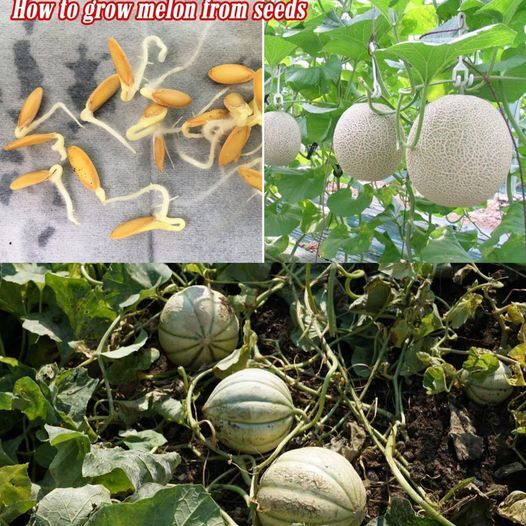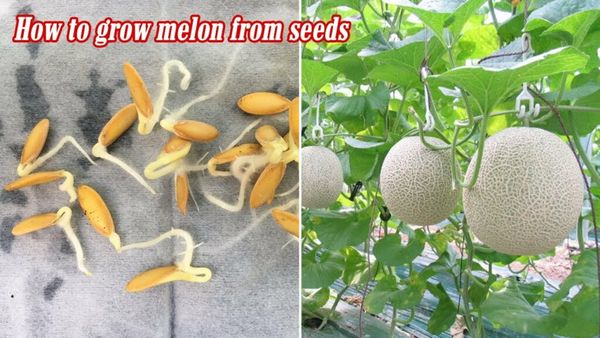

Are you a busy gardener with limited space? Do you still crave the taste of juicy, fresh melons? Well, you’re in luck! Growing melons in pots is a rewarding experience that allows you to enjoy the fruits of your labor, even without a garden. With a bit of patience and the right care, you can successfully grow melons in containers. Let’s dive into the world of container gardening and learn how to grow melons in pots!
Choosing the Right Melon Variety
The key to successful melon growing in containers is selecting the right variety. Opt for smaller varieties like mini watermelons, cantaloupes, or honeydews. These little gems require less space and are easier to manage in pots.
Planting Your Melons
Now that you have chosen your melon variety, it’s time to get your hands dirty and start planting!
Choose the Right Pot
To ensure your melons thrive, use a spacious pot with a capacity of at least 5 gallons. Melons have deep root systems, so a pot that is 12-14 inches deep is ideal. Don’t forget to check if the pot has drainage holes to prevent waterlogging.
Prepare the Soil
Fill your pot with high-quality potting soil mixed with compost. Melons love well-draining, nutrient-rich soil. You can also boost the soil’s fertility by adding a slow-release fertilizer, which will provide essential nutrients throughout the growing season.
Sow the Seeds
Plant 2-3 seeds about an inch deep in the center of the pot. If you prefer, you can start with seedlings instead of seeds. After planting, give the soil a light watering.
Germination
Place your pot in a sunny location. Melons need at least 6-8 hours of direct sunlight daily. Keep the soil moist but not soggy. Within 7-10 days, you should see the seeds sprouting and your melon plants coming to life.
Caring for Your Melons
Now that your melon plants are growing, it’s time to give them the care they need to thrive. Here are some essential tips:
Watering
Melons require consistent moisture, especially during flowering and fruit development. Water the plants deeply and regularly, making sure to allow the top inch of soil to dry out between waterings.
Feeding
Boost your melon plants’ growth by using a balanced liquid fertilizer every two weeks. Once the melons start to form, switch to a fertilizer high in potassium to encourage optimal fruit development.
Support and Pruning
As your plants grow, provide support with a trellis or stakes to keep the vines off the ground. This not only prevents diseases but also allows for better air circulation. Remember to prune excess leaves and side shoots to channel the plant’s energy towards fruit production.
Pollination
Melons require pollination to set fruit. If you notice a lack of pollinators, don’t fret! You can step in and hand-pollinate by transferring pollen from the male flowers to the female flowers using a small brush. Mother Nature will be proud of your efforts!
Harvesting Your Melons
The moment you’ve been waiting for has arrived – it’s time to harvest your precious melons! But how do you know when they’re ready? Here are some signs to look for:
- Sweet Fragrance: When your melons emit a sweet fragrance, it’s a good indicator that they are ripe and ready to be enjoyed.
- Easy Stem Slip: Gently check if the stem easily slips off the melon with a little pressure. This is another sign that the melon is ripe and at its peak flavor.
- Subtle Skin Color Change: Depending on the variety, the melon’s skin may undergo a slight color change when it’s ripe. Keep an eye out for this visual cue.
When you harvest your melons, handle them with care to avoid damaging the plant and the fruit. After all, you’ve put in the hard work, and it’s time to savor the fruits of your labor!
In Conclusion
Growing melons in pots is a fun and fruitful endeavor, especially for those with limited space and busy lives. By selecting the right variety, providing proper care, and ensuring adequate sunlight and water, you can enjoy the satisfaction of homegrown melons. No garden required! So roll up your sleeves, grab a pot, and embark on your melon-growing adventure. Happy gardening!